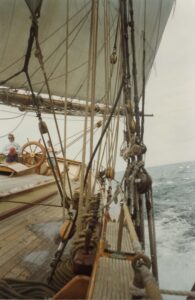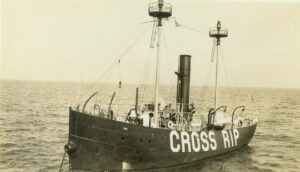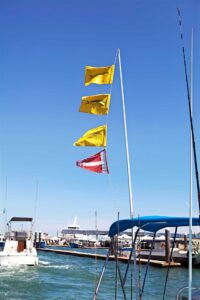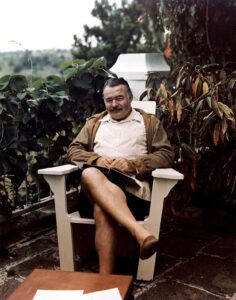On September 8, 1990 a hurricane made landfall at Galveston, Texas. With winds up to 140 miles per hour, it left between 6,000 and 12,000 dead. A storm surge in excess of 15 feet also left a terrible aftermath of property destruction with 3,600 buildings swept away. To this day, the Great Galveston Hurricane is the deadliest natural disaster in U.S. history.
I have seen many severe storms but never one like this … In the quarter of the city where I lodged everything was swept and nearly all drowned. The family with whom I roomed were all lost … There is not a building in town that is uninjured. Hundreds are busy day and night clearing away the debris and recovering the dead. It is awful. Every few minutes a wagon load of corpses passes by on the street …One meets people in all degrees of destitution. People but partially clothed are the rule and one fully clothed is an exception. The City is under military rule and the streets are patrolled by armed guards.— John D. Blagden, Galveston Weather Station, September 10, 1900
Galveston Island is one of the many barrier islands along the Gulf of Mexico coast in Texas. What made Galveston Island significant to European and American settlement was a natural deep-water channel leading into a spacious bay. After the War of 1812, Spain was worried about America’s ambitions and its possible encroachment of Spanish Texas, which was part of colonial New Spain. At this time, Spain was also fending off rumblings for Mexican independence.
During the Mexican War of Independence, in 1817, the pirate Jean Lafitte took command of the barrier island knowing it would be a perfect base for smuggling and piracy. He renamed it Campeche, and appointed himself as head of the government.
Lafitte built himself a two-story headquarters, which he painted red and surrounded it with a moat for protection. It was dubbed “Maison Rouge”. Here he created letters of marque from his “kingdom” which he handed out to his loyal followers, allowing them to become privateers preying on ships of all nations. Campeche thrived for a few years, reaching a population of about a thousand followers of Jean Lafitte. The U.S. decided to end piracy once and for all in the Gulf and dispatched the schooner USS Enterprise to Campeche. Lafitte sensing the futility of a fight burned Maison Rouge and the rest of his settlement, and in May 1821 sailed off on his flagship.
In 1825, after the Republic of Mexico was declared, the Port of Galveston was established and a customs house was soon built. Ten years later, after Texas rebelled from Mexico, Galveston became the principal port of the Texas Navy, and also served as the capital of the Republic of Texas. Prior to the Civil War, the city of Galveston had the largest slave market west of New Orleans. Its port made it the center of trade in Texas. During this time, Galveston was also the main port of entry for European immigrants, particularly German, who planned to settle in the western United States.
As the 1800s progressed, Galveston became a city of firsts for Texas: the first insurance company, the first opera house, the first orphanage, the first electric lights, the first telephones and the first medical school. All this while the population grew from 5,000 to 30,000 living on an island just slightly above sea level.
As the last of the 19th century came to a close, Galveston shipped more than 70% of the nation’s cotton from its warehouses on many of the thousand ships that called on the port annually. By then, the warm waters of the Gulf of Mexico were already an attraction for wealthy visitors from Texas and around the country. The number of people living in this vacation destination had swelled to 37,000.
The prediction of the path of hurricanes back then was even more problematic than today. Collecting first hand weather observations and the rapid dissemination of short-term forecasts were also very difficult with the technology available in those days. On September 6, 1900 a tropical storm that had traveled the length of Cuba strengthened into a hurricane as it passed northwest of Key West. The U.S. Weather Bureau forecasters assumed it would curve to the northeast as it continued into the Gulf of Mexico, as many tropical cyclones do. Instead it pursued a west-northwesterly track, and rapidly intensified into what today is known as a Category 4 hurricane.
Since Guglielmo Marconi had only demonstrated ship-to-shore wireless radio the year before, the “radio shack” on freighters hadn’t yet come into existence to relay wind, weather and sea state observations ashore. As far as the Weather Bureau meteorologists were concerned, they had lost the whereabouts of the storm as it bore down on Galveston.
Isaac M. Cline, the Galveston Weather Station Chief wrote, “A heavy swell from the southeast made its appearance in the Gulf of Mexico during the afternoon of the 7th. The swell continued during the night without diminishing, and the tide rose to an unusual height when it is considered that the wind was from the north and northwest …”. This long swell was a tell tale sign of an approaching hurricane, and Cline ordered the hurricane flags to be flown.
The next morning, he took his horse drawn cart down to the beach and advised everyone to get to higher ground immediately, even though the highest point on the island was less than nine feet above sea level. As the outer spiral bands came ashore that afternoon, the wind steadily increased until it reached a sustained speed of 100 miles per hour. By 6 p.m., the weather station’s anemometer was blown away. In the dark of night, the wind speed increased in excess of 130 miles per hour and the surging floodwaters rose throughout the night and carried away streetcar trestles, houses, people, horses and debris of every sort. Close to one quarter of the population didn’t survive the night.
In response to the Galveston Storm of 1900, islanders decided to rebuild. Sand was dredged from the ship channel and pumped ashore to raise the height of the island. Gas lines, utilities and sewers had to be raised using jackscrews. A seawall was begun to provide protection to the city. That seawall, 17 feet tall, has now been expanded to include 10 miles of coastline. However, that still leaves two thirds of the island unprotected from storm surge.
More recently, the eye of Hurricane Harvey inundated parts of Texas with more than 40 inches of rain. Many areas of Texas suffered casualties and devastating damage from flooding but the islanders are resilient, however, and Galveston has begun its recovery process.
Where to Visit
The Bishop’s Palace (1402 Broadway Ave.; 409-762-2475)
The Strand Historic District (2100 Strand St., 409-762-2515)
Ocean Star Offshore Drilling Rig and Museum (2002 Wharf Rd., 409-766-7827)
The Tall Ship ELISSA at Texas Seaport Museum (2100 Harborside Drive, 409-763-1877)
Moody Mansion (2618 Broadway Ave., 409-762-7668)
Moody Gardens (1 Hope Blvd., 800-582-4673)
Galveston Railroad Museum (2602 Santa Fe Place, 409-765-5700)
Where to Dock
Harbor House Hotel & Marina at Pier 21 (No. 28 Pier 21, 409-763-3321)
Galveston Yacht Basin (715 N. Holiday Drive, 409-765-3000)
The Moody Gardens Marina (7 Hope Blvd, 409-683-4490)
Capt. Jeff Werner has been in the yachting industry for over 25 years. In addition to working as a captain on private and charter yachts, both sail and power, he is a certified instructor for the USCG, US Sailing, RYA and the MCA. He is also the Diesel Doctor, helping to keep your yacht’s fuel in optimal condition for peak performance. For more information, call 239-246-6810, or visit MyDieselDoctor.com. All Marinalife members receive a 10% discount on purchases of equipment, products and supplies from Diesel Doctor.





